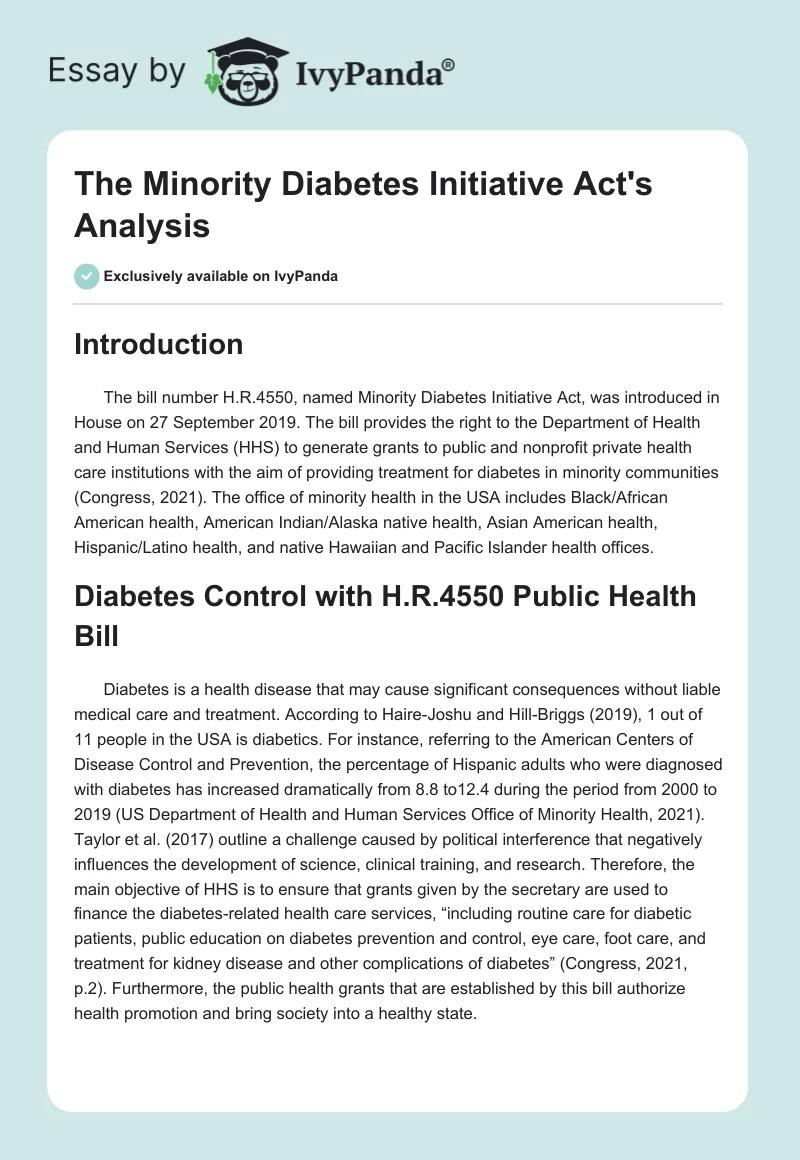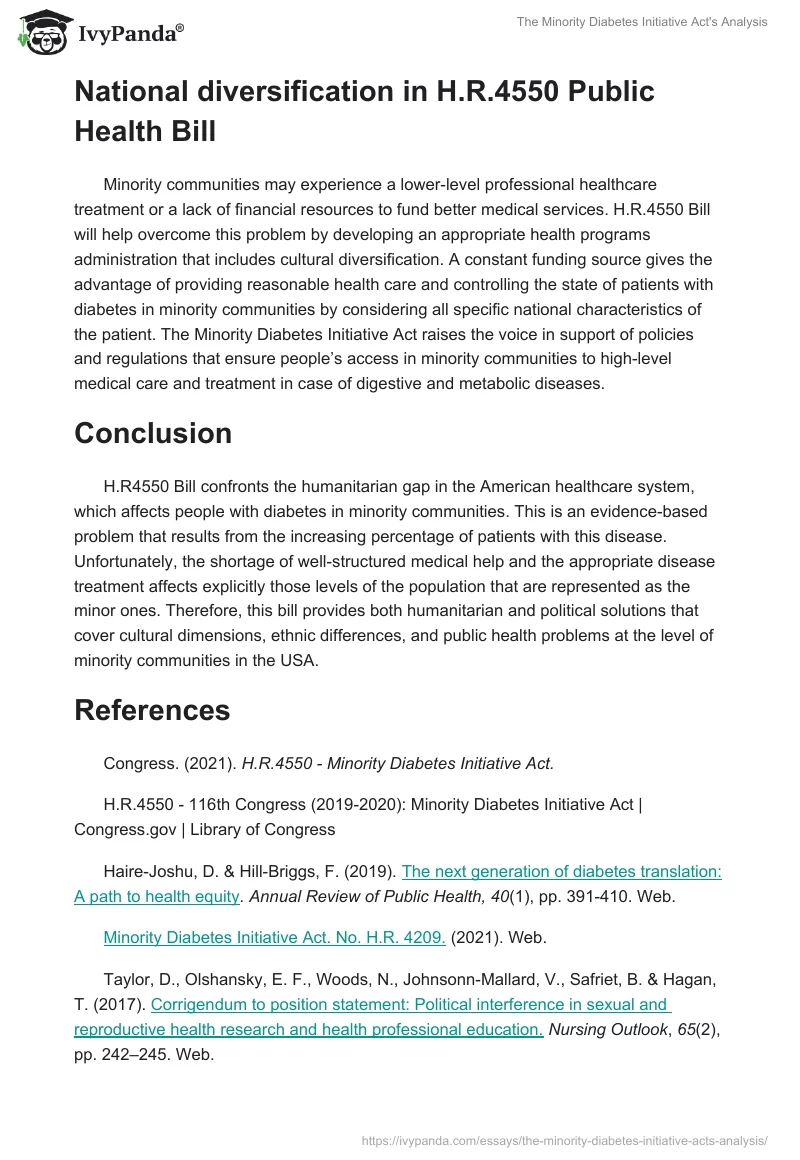Introduction
The bill number H.R.4550, named Minority Diabetes Initiative Act, was introduced in House on 27 September 2019. The bill provides the right to the Department of Health and Human Services (HHS) to generate grants to public and nonprofit private health care institutions with the aim of providing treatment for diabetes in minority communities (Congress, 2021). The office of minority health in the USA includes Black/African American health, American Indian/Alaska native health, Asian American health, Hispanic/Latino health, and native Hawaiian and Pacific Islander health offices.
Diabetes Control with H.R.4550 Public Health Bill
Diabetes is a health disease that may cause significant consequences without liable medical care and treatment. According to Haire-Joshu and Hill-Briggs (2019), 1 out of 11 people in the USA is diabetics. For instance, referring to the American Centers of Disease Control and Prevention, the percentage of Hispanic adults who were diagnosed with diabetes has increased dramatically from 8.8 to12.4 during the period from 2000 to 2019 (US Department of Health and Human Services Office of Minority Health, 2021). Taylor et al. (2017) outline a challenge caused by political interference that negatively influences the development of science, clinical training, and research. Therefore, the main objective of HHS is to ensure that grants given by the secretary are used to finance the diabetes-related health care services, “including routine care for diabetic patients, public education on diabetes prevention and control, eye care, foot care, and treatment for kidney disease and other complications of diabetes” (Congress, 2021, p.2). Furthermore, the public health grants that are established by this bill authorize health promotion and bring society into a healthy state.
National diversification in H.R.4550 Public Health Bill
Minority communities may experience a lower-level professional healthcare treatment or a lack of financial resources to fund better medical services. H.R.4550 Bill will help overcome this problem by developing an appropriate health programs administration that includes cultural diversification. A constant funding source gives the advantage of providing reasonable health care and controlling the state of patients with diabetes in minority communities by considering all specific national characteristics of the patient. The Minority Diabetes Initiative Act raises the voice in support of policies and regulations that ensure people’s access in minority communities to high-level medical care and treatment in case of digestive and metabolic diseases.
Conclusion
H.R4550 Bill confronts the humanitarian gap in the American healthcare system, which affects people with diabetes in minority communities. This is an evidence-based problem that results from the increasing percentage of patients with this disease. Unfortunately, the shortage of well-structured medical help and the appropriate disease treatment affects explicitly those levels of the population that are represented as the minor ones. Therefore, this bill provides both humanitarian and political solutions that cover cultural dimensions, ethnic differences, and public health problems at the level of minority communities in the USA.
References
Congress. (2021). H.R.4550 – Minority Diabetes Initiative Act.
H.R.4550 – 116th Congress (2019-2020): Minority Diabetes Initiative Act | Congress.gov | Library of Congress
Haire-Joshu, D. & Hill-Briggs, F. (2019). The next generation of diabetes translation: A path to health equity. Annual Review of Public Health, 40(1), pp. 391-410. Web.
Minority Diabetes Initiative Act. No. H.R. 4209. (2021). Web.
Taylor, D., Olshansky, E. F., Woods, N., Johnsonn-Mallard, V., Safriet, B. & Hagan, T. (2017). Corrigendum to position statement: Political interference in sexual and reproductive health research and health professional education.Nursing Outlook, 65(2), pp. 242–245. Web.
US Department of Health and Human Services Office of Minority Health. (2021). Diabetes and African Americans. Web.


